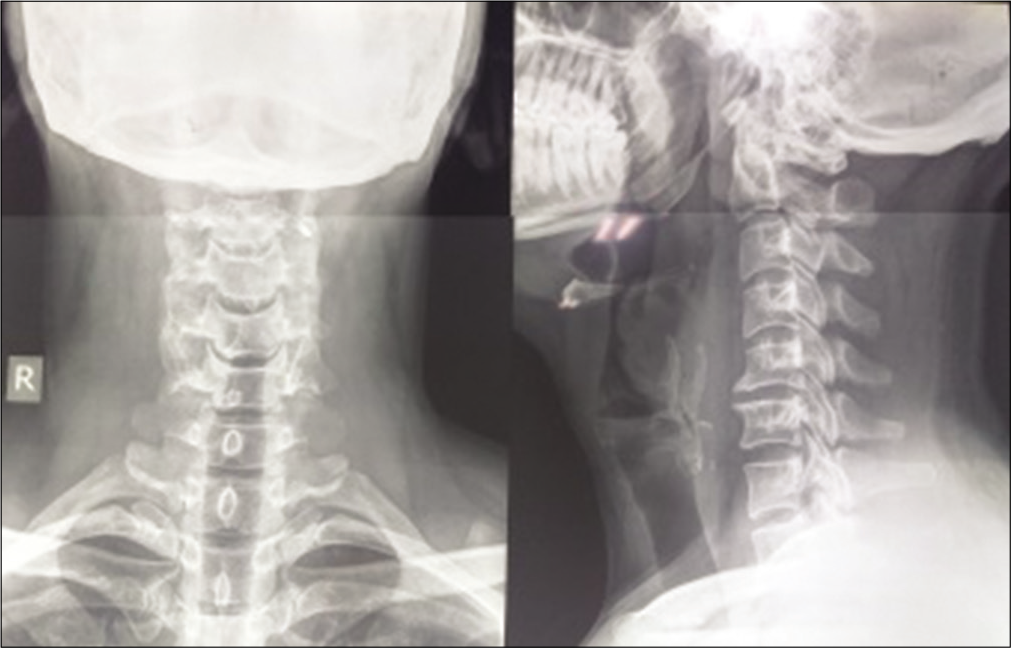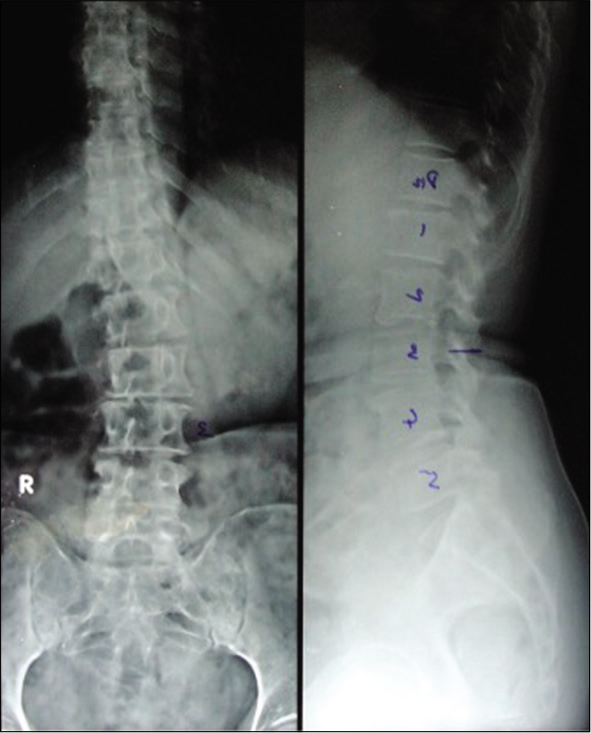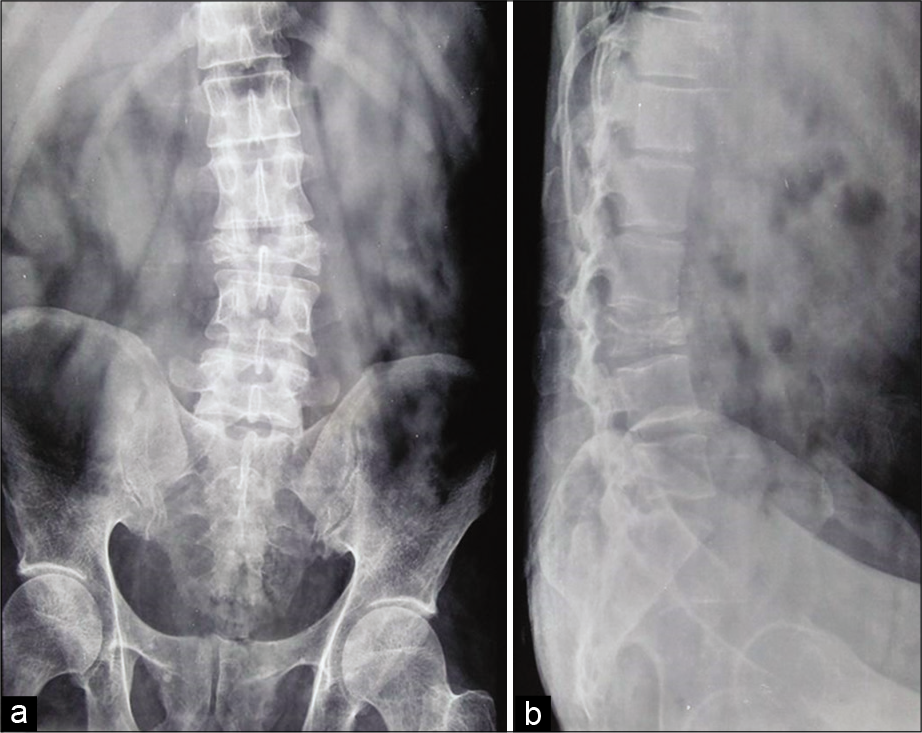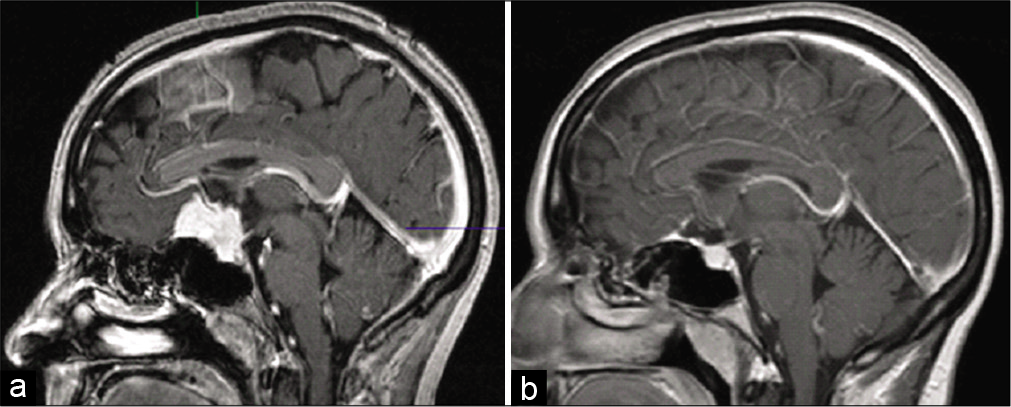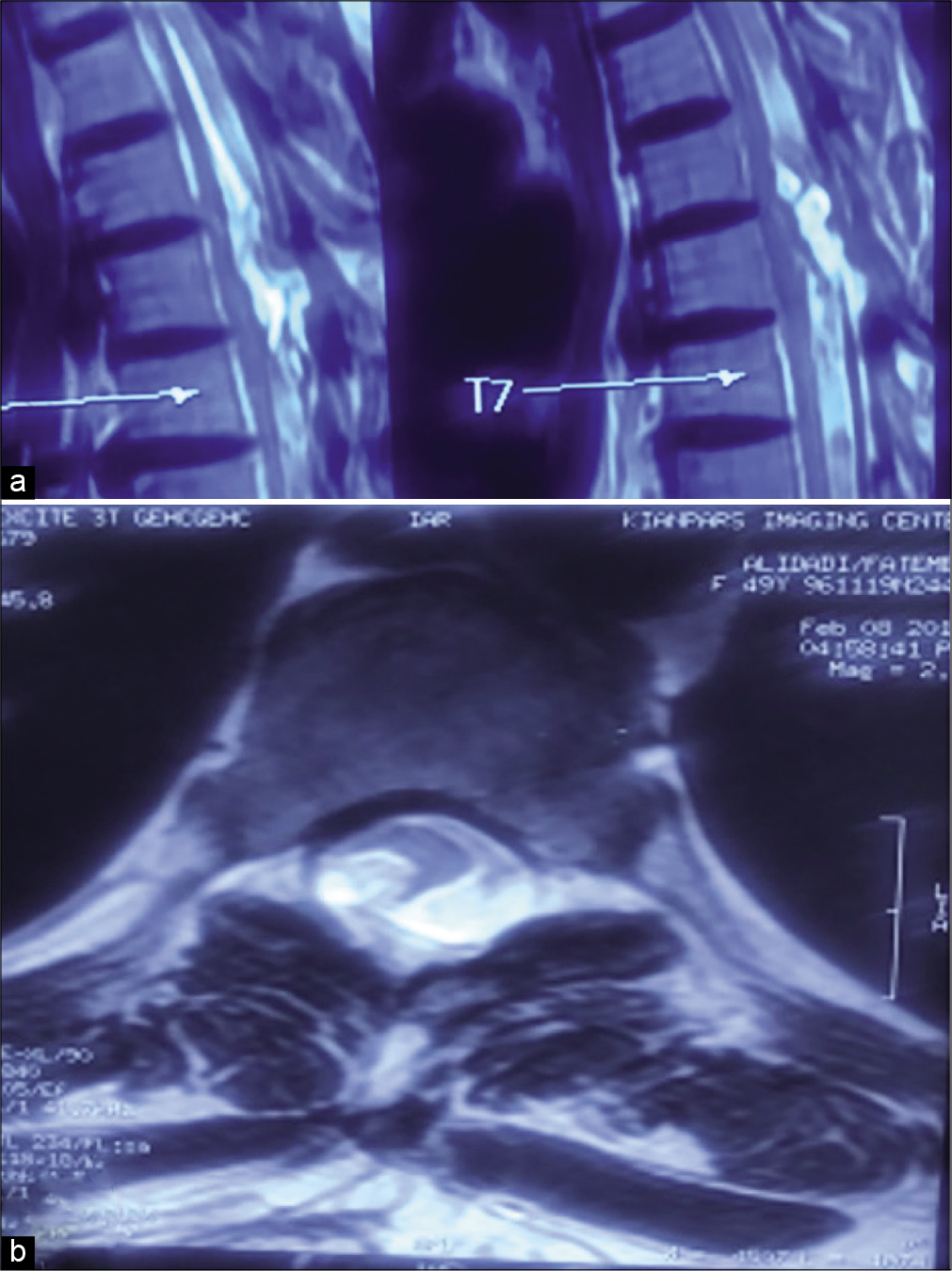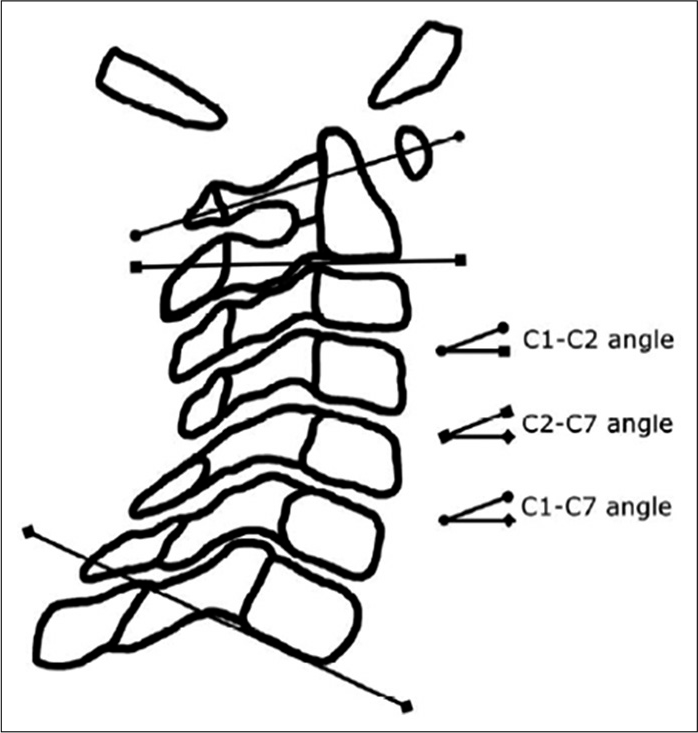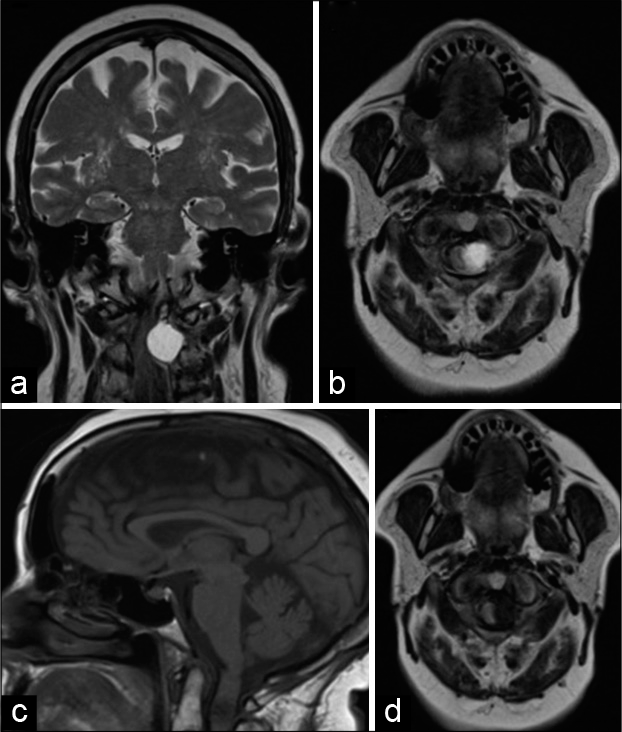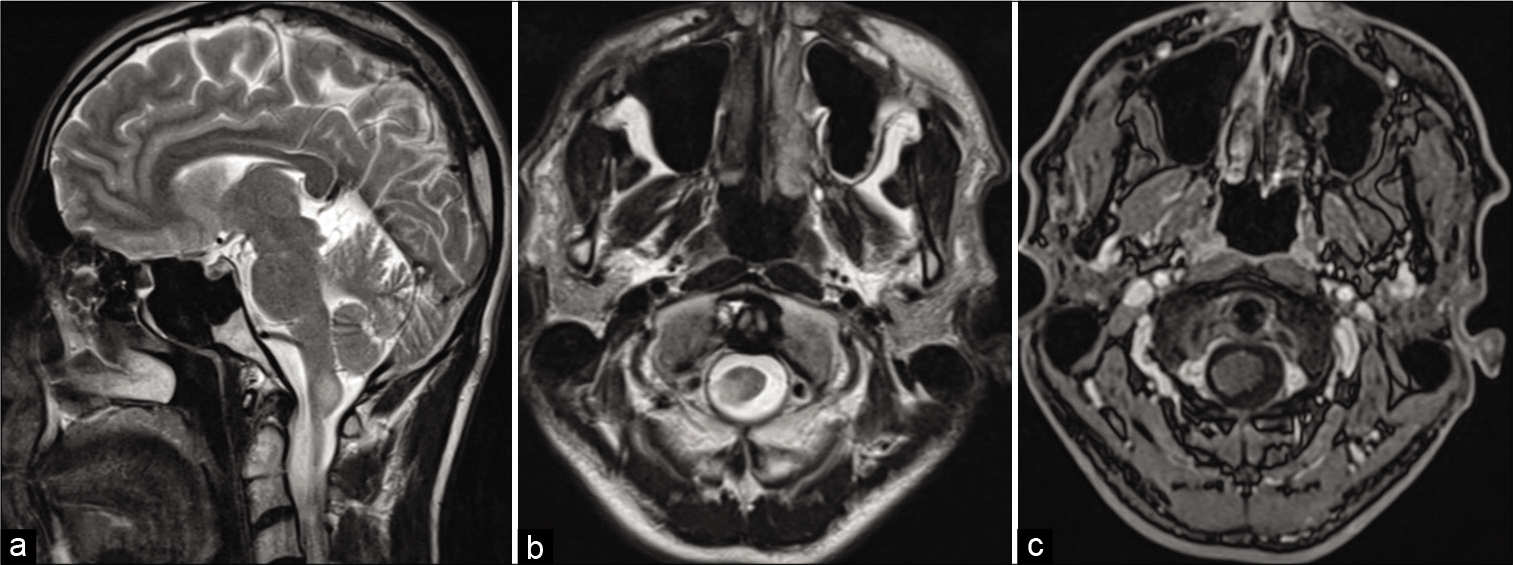Extremely rare case of retropharyngeal space benign plexiform schwannoma - Excised through Smith- Robinson Approach
Date of publication: 11-Jul-2020
Background: Approximately 25–45% of schwannomas are typically slow-growing, encapsulated, and noninvasive tumors that occur in the head-and-neck region where they rarely involve the retropharyngeal space. Here, we report deep-seated benign plexiform schwannoma located in the retropharyngeal C2-C5 region excised utilizing the Smith-Robinson approach.
Extensive vertebral scalloping in a thoracolumbar junction spinal schwannoma
Date of publication: 11-Jul-2020
Abstract
Severe vertebral scalloping in spinal schwannoma is very rare. When present, extensive scalloping of the vertebral bodies possesses significant treatment challenges in patients with spinal tumors. We present the computed tomography scan and magnetic resonance images of spinal schwannoma with marked vertebral scalloping in a 40-year-old Nigerian.
Salmonella Typhi dorsolumbar spondylodiscitis mimicking tuberculosis – An interesting case report
Date of publication: 11-Jul-2020
Background: Salmonella rarely causes spinal infections in patients other than those who are immunocompromised or have sickle cell anemia. Further, most cases occurring in healthy individuals have preexisting gastrointestinal infections. Here, we present a case of pyogenic spondylodiscitis attributed to Salmonella Typhi, in an immunologically normal patient without gastrointestinal pathology.
Metastatic small cell neuroendocrine tumor with spinal cord compression – Understanding a rare entity
Date of publication: 11-Jul-2020
Background: Metastatic spinal cord compression with carcinoid tumor as primary is a rare entity with its own diagnostic dilemmas and surgical challenges. Most of these neuroendocrine tumors arise from the gastrointestinal tract or lungs with metastasis to spine in <2% cases. Early diagnosis in an orderly manner is of significance as most of it is delayed due to slowly developing symptoms. Furthermore, prompt management has been an important factor as morbidity and mortality are high in such cases and surgical intervention if needed, which can be a challenge due to disturbed alignment, complex regional anatomy, and careful handling of spinal cord.
The transpalpebral approach “eyelid incision” for surgical management of intracranial tumors: A 10-years’ experience
Date of publication: 11-Jul-2020
Background: The minimally invasive approaches to the anterior skull base region through fronto-orbital craniotomy remain a highly accepted option that gains countenance and predilection over time. The transpalpebral “eyelid” incision is an under-utilized and more recent technique that offers a safe efficient corridor to manage a wide variety of lesions.
Intramedullary mature teratoma with an exophytic component in an adult: Report of a case and literature review
Date of publication: 11-Jul-2020
Background: Intramedullary mature teratomas (IMMTs) are rare. This is particularly true in the adult population.
Technical outcome of atlantoaxial transarticular screw fixation without supplementary posterior construct for rheumatoid arthritis
Date of publication: 11-Jul-2020
Background: transarticular screw (TAS) fixation without a supplementary posterior construct, even in rheumatoid arthritis (RA) patients, provides sufficient stability with acceptable clinical results. Here, we present our experience with 15 RA patients who underwent atlantoaxial (AA) TAS fixation without utilizing a supplementary posterior fusion.
Clinicoradiological outcomes of Goel and Harms fixation for atlantoaxial instability: An institutional experience
Date of publication: 11-Jul-2020
Background: Few studies have reported on the long-term outcomes of Goel and Harms C1-C2 fusions in the Asian population.
Intradural synovial cyst of the upper cervical spine: A rare cause of symptomatic cord compression
Date of publication: 11-Jul-2020
Background: Synovial cysts are commonly observed soft-tissue masses of the spine, typically extradural and located in the lumbar region. We describe a very rare symptomatic case of a C1-C2 intradural synovial cyst.
Facial pain as an initial manifestation of intramedullary cervical spinal cord tumor: A case report and literature review
Date of publication: 04-Jul-2020
Background: Facial pain resembling trigeminal neuralgia is not a common clinical feature of cervical spinal cord tumor. Depending on nature of the facial pain, differential diagnosis tends to include neurovascular conflict, multiple sclerosis, cerebellopontine angle tumors, herpes zoster, facial injuries, and other conditions involving trigeminal nerve, ganglion, and root. Here, we present a unique case of pain in trigeminal distribution due to an intramedullary tumor in the upper cervical spinal cord.


